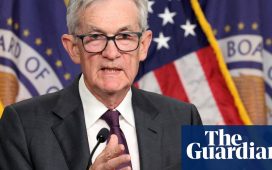Madeline Thomas is a Trader Joe’s superfan who posts updates about the grocery chain under the handle @TraderJolene. She knows so much about the American grocery chain that she’d worked out about the plan to raise the price of bananas days before it was first reported by CNN.
“I’m deep in all of the grocery subreddits, and I could see grocery workers from Trader Joe’s talking about how everyone would freak out,” Thomas said.
For those who are uninitiated into the cult of Trader Joe’s – the national supermarket chain cultivates an intense fanbase who freak out over every product, whether it’s a mini tote bag or frozen dinner – a banana price increase might not sound like much. Before this week, bananas cost 19 cents each, and now it’s 23 cents.
Is a four-cent increase much to complain about? Maybe not, but shoppers dubbed the change the “end of an era”, because Trader Joe’s kept the same banana price for 20 years.
“We only change our prices when our costs change, and after holding our price for bananas at 19 cents each for more than two decades, we’ve now reached a point where this change is necessary,” Trader Joe’s public relations manager, Nakia Rohde, wrote in a statement. “At the same time, we have been able to negotiate costs for a number of our products, and have lowered our retail prices accordingly.” She listed off a decrease in the prices of raw almonds, romaine hearts, organic tri-color bell peppers and green onions.
Bananagate fits into a frustrating trend for shoppers, who are used to soaring grocery prices. This week, Dollar Tree announced that it would raise the price cap of its stores to $7, affecting the cost of food, pet, and personal care products. In general, grocery prices have gone up 25% since 2019, significantly burdening budgets.
Bananas occupy a particular niche in the lore of Trader Joe’s company history. Dan Bane, the former CEO, said the store used to sell bananas by the pound, which is typical, but stopped after a conversation with a “nice little lady” customer at a Sun City, Arizona, store.
According to Bane, the woman looked through the banana display, but decided against buying some. “I asked her, I said, ‘Ma’am, if you don’t mind me asking, I saw you looking at the bananas but you didn’t … put anything in your cart,’” Bane recalled in a 2018 podcast episode. “And she says to me, ‘Sonny, I may not live to that fourth banana.’ And so we decided the next day that we were going to sell individual bananas.”
Later, Trader Joe’s would initiate Banana Day, a celebration held on 17 May, in honor of a pair of old friends who supposedly bumped into each other at one store’s banana stand and then fell in love. “They have a holiday every year on the day that it happened,” Thomas said.
Thomas shared the banana pricing news with her followers on TikTok and Instagram and received feedback that ranged from unbothered to enraged. “I had people saying, ‘not cool’ or ‘end of an era’ or using crying-face emojis,” she said. “It’s wild to see the attention that this couple of cents is getting when literally an entire group of people are starving to death right now.”
Phil Lempert, a consumer trend-watcher and analyst who goes by the Supermarket Guru online, says that Trader Joe’s is responding to “a much bigger banana problem”. The World Banana Forum has signaled alarm over how the climate crisis will hit availability of the fruit, which are affected by rising temperatures and severe weather.
“I think climate change is really an enormous threat to the banana sector,” Pascal Liu, senior economist at the UN Food and Agriculture Organization, told the BBC this year.
For years, scientists warned about fungi killing the Cavendish banana, which is the most commonly consumed variety of the fruit. Over the past decade, the fungus spread from Asia to South America and then Africa, decimating crops on farms around the world. Lempert believes this should be part of the conversation.
“Trader Joe’s didn’t do a great job in sharing why the price went up,” he said. “The Cavendish banana we all know and love is under siege from this fungus and it very well may be extinct soon. There are countless people on social media complaining, but I wish we could bring the conversation to a broader place and really talk about the impact that climate change has on our food supply.”
Thomas, the Trader Joe’s influencer, compared the banana fiasco to Costco’s beloved hotdogs, which have stayed at $1.50 since 1989, despite inflation. (When the Costco president, W Craig Jelinek, reportedly complained about losing money over this, the chain’s founder and former CEO, Jim Sinegal, reportedly replied, “If you raise [the price of] the effing hotdog, I will kill you.”)
“It would have been cool of Trader Joe’s to just pull a Costco,” Thomas said.









